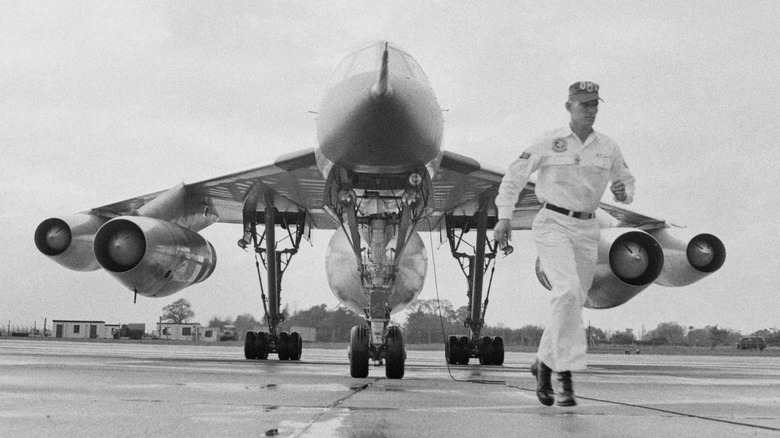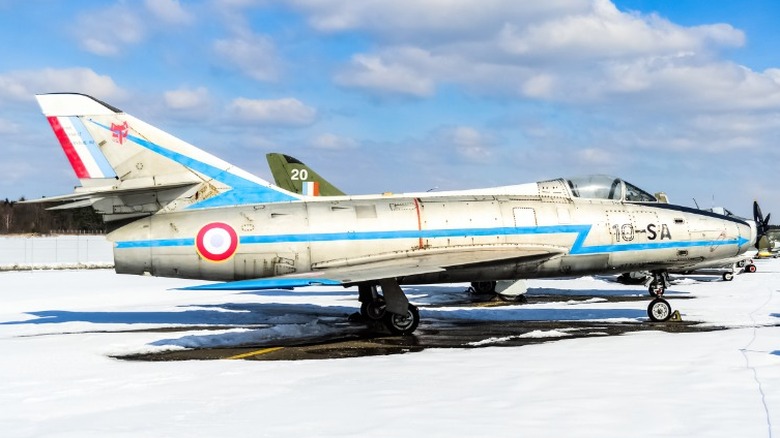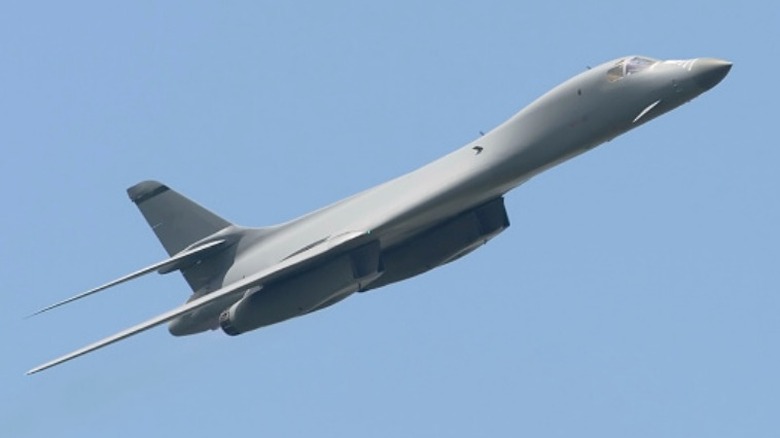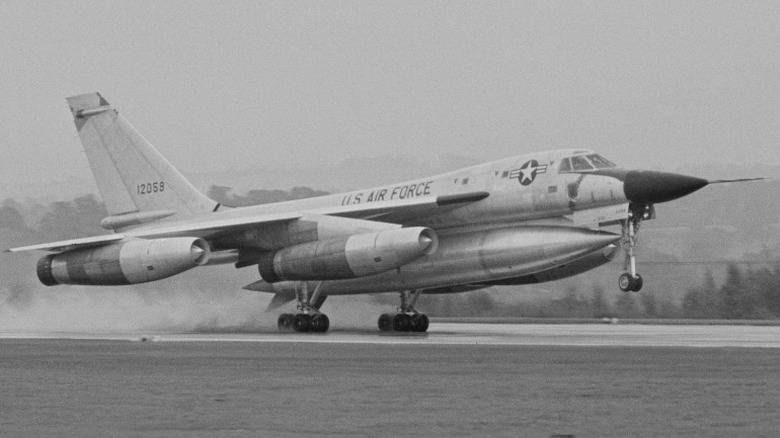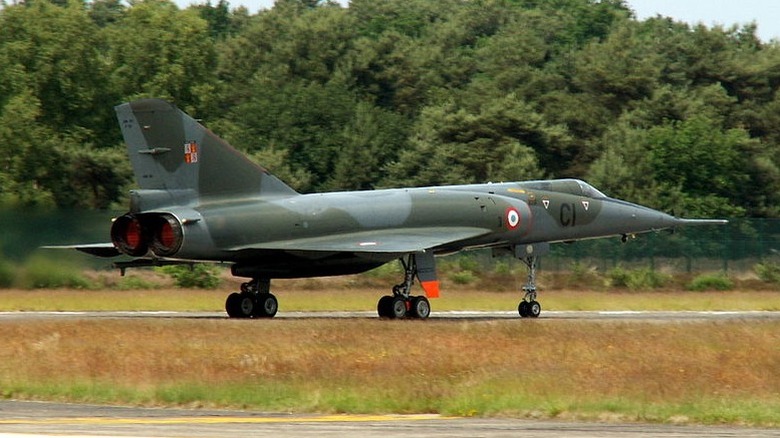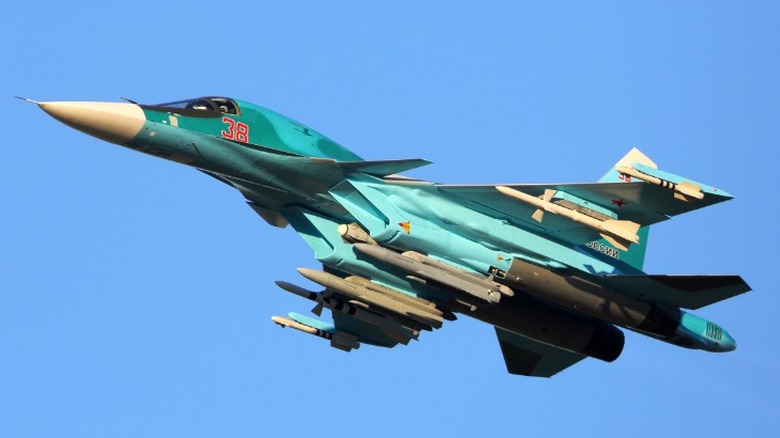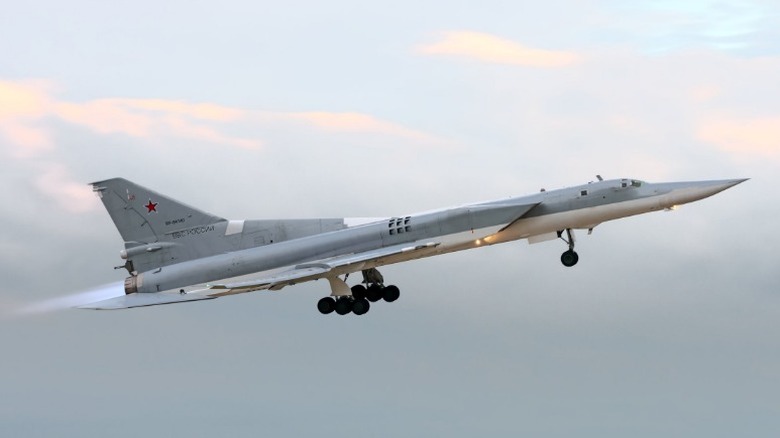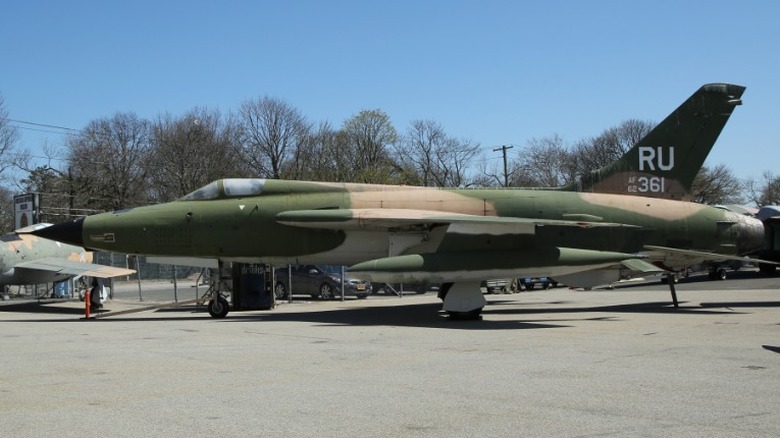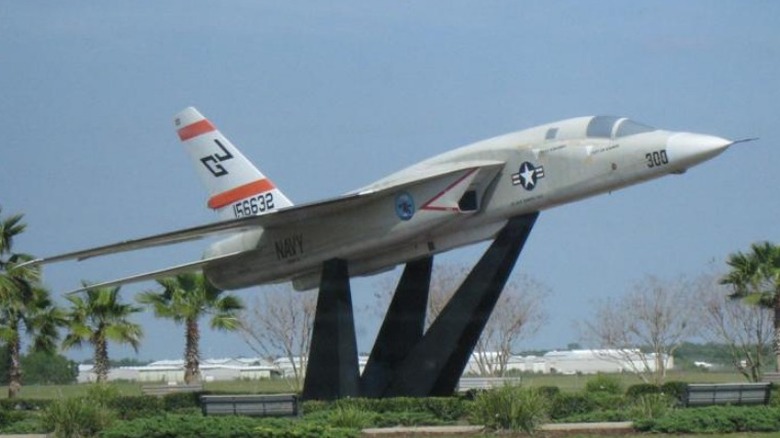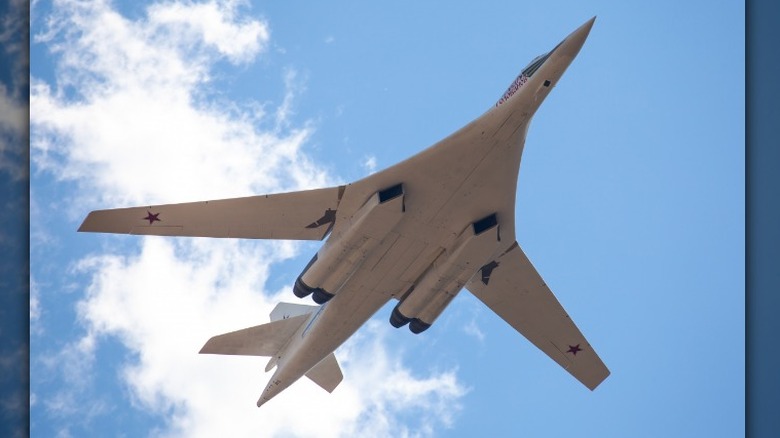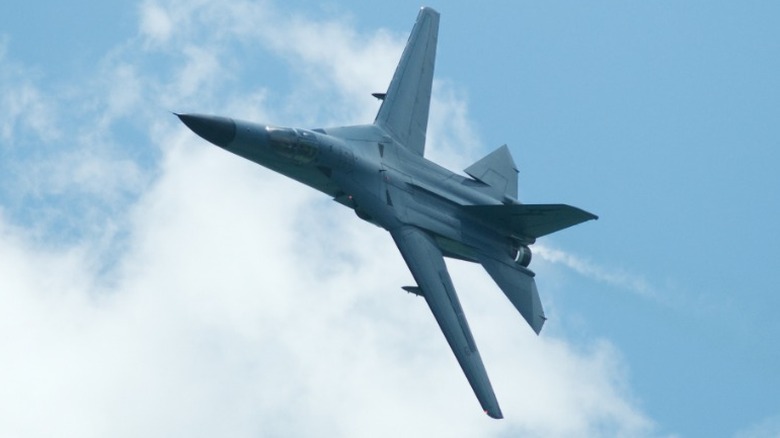10 Most Impressive Supersonic Bombers Of All Time
That we as humans can get into metal tubes and exceed the speed of sound high above the earth is an astounding fact and impressive accomplishment. It is further impressive that this is a state of being that has persisted for nearly 75 years at this point. Still more stunning is the fact that we have machines that are capable of doubling the speed of sound while carrying weapons that have the potential of starting the complete annihilation of the planet, which is also an ominous fact to consider. Among the many modern weapons of war that our military forces have at their disposal, the supersonic bomber is among the most fascinating machines to watch and study, and its evolution is a story of tenacity and sheer intelligence bringing science and engineering to bear on military aircraft.
Supersonic flight has been with us since around the time that the Cold War began, and the East versus West rivalry was the impetus for the rapid development of faster and more powerful planes capable of carrying the most dangerous weapons ever developed. But even when they are not carrying a nuclear payload, the carrying capacity of conventional warheads by the combined militaries of the world is still immense. Over the years, manufacturers from a range of industrialized countries have produced supersonic bomber-fighter aircraft in addition to fighter jets meant for other roles. So, looking over those meant to serve as bombers only — this excludes the multirole F-35 Joint Strike Fighter, for example — here are 10 of the most impressive supersonic bombers of all time.
Dassault Super Mystère
First on the list of West European production aircraft to break the supersonic barrier was the French-made Dassault Super Mystère. This plane went into development in the mid-'50s and the first ones went into service in 1957. The main user of these planes was the French Air Force, however, out of the 180 planes built, 36 went to Israel.
The Super Mystère was armed with a pair of 30mm cannons with up to 150 rounds available for each, but the real firepower came from the four hardpoints to which ordnance could be attached. These were usually equipped with American Sidewinder air-to-air missiles for aerial engagements, but the payload of up to 5,000 pounds meant it could carry a couple of hefty free-fall bombs or rockets. These planes saw action for up to two decades with the French and were used by Israel during the Six-Day War and the following Yom Kippur War. When France and Israel retired these jets, the Honduran Air Force acquired them and continued their use until the '90s.
Rockwell B-1B Lancer
Rockwell produced the B-1B Lancer for the U.S. Air Force, going into service beginning in 1985. These are powered by four GE turbofan engines with afterburners and are capable of carrying a payload of up to 75,000 pounds, making them capable of carrying more weapons than any other supersonic bomber in the American fleet. Top speed is MACH 1.2 with a ceiling of more than 30,000 feet. It is also a long-range bomber that can reach up to 6,500 miles before in-flight refueling.
While the B-1B is much larger than an F-16, its radar cross-section is smaller. It was designed to penetrate air defenses by flying below radar cover. It was originally designed to be capable of carrying nuclear warheads, but it has been converted to only carry conventional weapons due to the signing of the START treaty in 2007. The B-1B is still operational and has been in combat operations in the Middle East during Operation Desert Fox, Operation Allied Force, and Operation Enduring Freedom.
Convair B-58 Hustler
Starting in 1960, the Convair B-58 "Hustler" started patrolling the skies for the U.S. Air Force as a strategic bomber. Equipped with four engines, it was capable of hitting MACH 2 and carrying nuclear weapons in a pod or the under-wing pylons. Its ceiling was 64,800 feet and had a range of 4,400 miles without aerial refueling and held a crew of three.
The Hustler flew for ten years from 1960 to 1970, setting many records during its service for speed and altitude. Its delta-wing design and advanced inertial navigation system and targeting system meant it was the most sophisticated plane built in its day. While the Hustler featured the most advanced engineering of its day, several of the planes were lost in accidents. Twenty-six of the 116 Hustlers put into service were lost, an alarmingly high accident rate. This may have contributed to the fact that no Hustler ever dropped a bomb onto enemy territory or fired on any target during a conflict while in service.
Dassault Mirage IV
Just as the Super Mystère went into service, Dassault was already working on another supersonic bomber, the delta-wing Mirage IV. This aircraft is propelled by a pair of SNECMA Atar turbojet engines that push it up to MACH 2.2 — it is limited to that speed due to heat buildup. It could theoretically go much faster. Its ceiling is 65,000 feet and it has a range of 1,500 miles.
The Mirage IV was built to carry a heavy armament of free-fall bombs, particularly one with a nuclear warhead. The scope of this aircraft's mission was to strike a city in the Soviet Union with a thermonuclear device, and it is not equipped with any type of gun or cannons. The mission of a Mirage IV would have been to carry a nuclear warhead across Europe to deliver its payload to one of several Soviet cities, including Moscow. The mission would have planes fly in pairs with one carrying the weapon and the other carrying a pod full of fuel that could be transferred to the other plane during flight. They were also used for reconnaissance having photographic equipment attached in a pylon instead of a weapon and several of these planes saw service in this role flying over Bosnia, Iraq, Kosovo, and Afghanistan before being replaced by the Mirage 2000.
[Featured image by AlfvanBeem via Wikimedia Commons | Cropped and scaled | CC0 1.0]
Sukhoi Su-34
In service today as part of the Russian Air Force is the Sukhoi Su-34, which entered service in 2015. It is a frontline fighter-bomber equipped with a 30mm cannon and 10 hardpoints for a range of weapons, including air-to-ship, air-to-air, and anti-radiation missiles as well as free-fall and guided bombs. While it is not a stealth fighter, it is one of the most advanced aircraft in service in Russia today.
The Su-34 is a twin-engine attack fighter capable of a top speed of MACH 1.6 with a service ceiling of 45,000 feet. The Su-34 is notable for its ability to take on long flying missions thanks to external fuel tanks allowing it to fly nearly 3,000 miles without refueling.
While this aircraft is a highly advanced modern fighter that costs tens of millions of dollars to produce, many have been shot down in Ukraine during Russia's offensive action against its neighbor. Confirmed reports of several aircraft being shot down, particularly in the Donetsk oblast, have been reported with at least one story, although unconfirmed, about a Ukrainian grandpa downing a plane with just a rifle. That is unlikely how it went down, but his receiving a medal for it still must have rankled Putin nonetheless.
Tupolev TU-22
The Tupolev TU-22 is a medium-range bomber that has been developed into several variants since its introduction in 1962. Some of the applications this airframe has been converted for include that of a bomber to deliver free-falling munitions and air-to-surface missiles, a reconnaissance craft with advanced surveillance equipment, and as a tanker for in-flight refueling. It is powered by twin turbojet engines and has a maximum speed of MACH 1.3 with a service ceiling of 48,000 feet.
The TU-22 is an extremely fast plane, but its limited range prevents it from being a true long-range bomber. During its development, Soviet officials chose to invest heavily in intercontinental ballistic missiles rather than long-range aircraft. As a result, this aircraft was primarily intended to be an attack craft against Western aircraft carriers. Despite its development history stretching back to the early days of the Cold War, the TU-22 is still used in the Russian fleet and has been used to conduct strikes on Ukrainian territory in 2022.
Republic F-105 Thunderchief
One of the earliest efforts by the Americans to develop a supersonic bomber capable of deploying nuclear warheads resulted in the Republic F-105 Thunderchief. Despite earlier development, the first production aircraft did not hit the skies until 1959. This aircraft was made to be used in any weather condition and was outfitted with mono-pulse and Doppler radar to that end. In addition to having several hardpoints, it also featured an internal weapons bay, although these were all later sealed and replaced with additional fuel tanks.
The F-105 was designed to carry a significant payload of weapons and was used to do so with conventional munitions over Vietnam. On a typical bombing run, the F-105 could carry eight 750-pound bombs or five 1,000-pound bombs on shorter runs. Additionally, it could carry wing-mounted sidewinders and napalm canisters. However, despite the impressive capabilities of this aircraft, it suffered from many problems. Overheating and fuel leaks were regular threats to the safety and well-being of pilots and issues with the wiring and hydraulics created maintenance headaches for the engineers trying to keep these planes in the sky. Production would eventually be scaled back, even though some of the issues were solved with updates and repairs. The last U.S. Air Force F-105 flight happened in 1984.
North American A-5 Vigilante
The A-5 Vigilante is unique among American supersonic bombers as it is the only one to ever be built and used to launch from a carrier. Although the Air Force was responsible for the bulk of long-range bomber capability at the time, the U.S. Navy commissioned this aircraft to extend the country's capabilities much further than ever before. Other rare qualities of this Navy plane is its capability of reaching MACH 2 speeds and its internal bomb bay, which could carry a nuclear weapon and additional fuel tanks.
In addition to delivering a nuclear payload, the Vigilante could also carry conventional weapons and be used for reconnaissance, which was the majority of its missions. This aircraft was used extensively during the Vietnam War, and that service is connected to at least one potentially devastating incident in 1971. An RA-5C Vigilante was carrying out a reconnaissance mission over North Vietnam to get photographic intelligence of movements around the Song Ca River, which was in the range of the North's surface-to-air missile coverage. At some point during a second pass over a village in the area, the pilot saw a flash and heard a "whumpf" and was thrown forward into his harness. Despite the lack of any radar warnings, he flew back to his carrier and landed, only to discover his plane had taken a picture of a SAM missile located just 104 feet below the plane. It was a lucky miss and no one knows exactly why it did not detonate so close to its target.
[Featured image by HommieDaKlown via Wikimedia Commons | Cropped and scaled | Public domain]
Tupolev Tu-160
Russia's supersonic Tupolev Tu-160 is a behemoth of an aircraft and is the largest plane of its type. Powered by four turbofan engines, it has a maximum speed of MACH 1.9 and a service ceiling of just over 50,000 feet. The first prototype flew in 1981 and production aircraft entered service in 1987. Production continued until 1992 when Boris Yeltsin announced that no more strategic bombers would be built. With its range of 7,600 miles, a Tupolev Tu-160 would be able to reach the United States mainland without refueling. Armament is carried internally and it is capable of carrying cruise missiles, air-to-surface missiles, and free-fall bombs with either nuclear or conventional warheads. Also, the six-engine MACH 3 capable XB-70 Valkyrie developed by the Air Force would have exceeded this Tupolev in nearly every specification, but never made it out of the prototype phase.
Despite the breakup of the Soviet Union and Yeltsin's order to end production, the Tu-160 remains in service in the Russian Air Force. Thirty-six copies were built and 19 were stationed in Ukraine when it declared independence. However, the Ukrainian Air Force could not afford the upkeep and negotiated with Russia to return all but a few, which were scrapped a few years later. An American company attempted to buy three of them to use for launching sub-orbital satellites, but Russian authorities protested on the grounds of the START-2 nuclear weapons treaty that would have prevented the aircraft from falling into American hands. Some of the bombers were returned to Russia and, sadly, some of the planes once owned by Ukraine have been used to launch missile strikes against it.
General Dynamics F-111 Aardvark
Among supersonic bombers, the General Dynamics F-111 Aardvark has a long service career, having entered into service in 1967 and fully retired not until 2010. This long tenure is a testament to how capable and durable this aircraft was, and the total production run of 562 planes serves as proof of how useful it became during its life.
The Aardvark is a medium-range bomber powered by twin turbofan engines that are capable of pushing it up to MACH 2.2, with a service ceiling of 60,000 feet. It features variable-sweep wings that allowed it to take off in as little as 2,000 feet with the wings forward and reach supersonic speeds with the wings swept back into a delta formation. In addition to its two 20mm cannons, the Aardvark could be equipped with an array of laser-guided bombs, anti-radiation missiles, air-to-surface missiles, and Sidewinder air-to-air missiles on a total of nine hardpoints.
The Aardvark was one of the most capable fighter aircraft of the U.S. Military and it conducted missions in Vietnam, Libya, and Desert Storm in Iraq. Production started in 1964 and ended in 1976, and the last model retired from the Australian Air Force.
